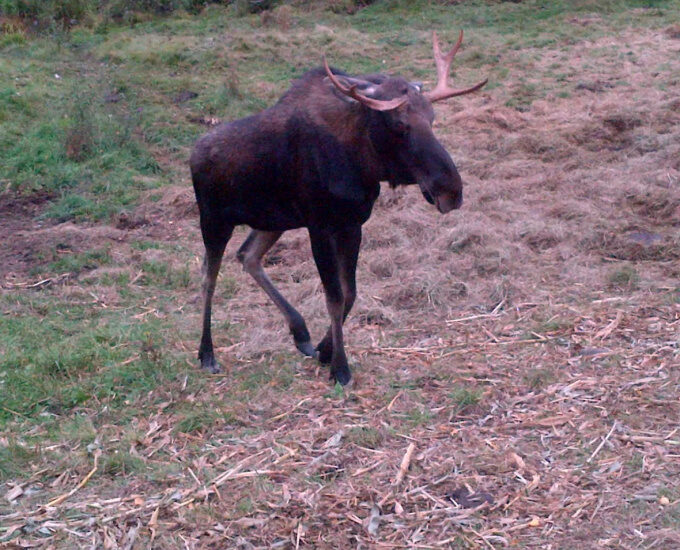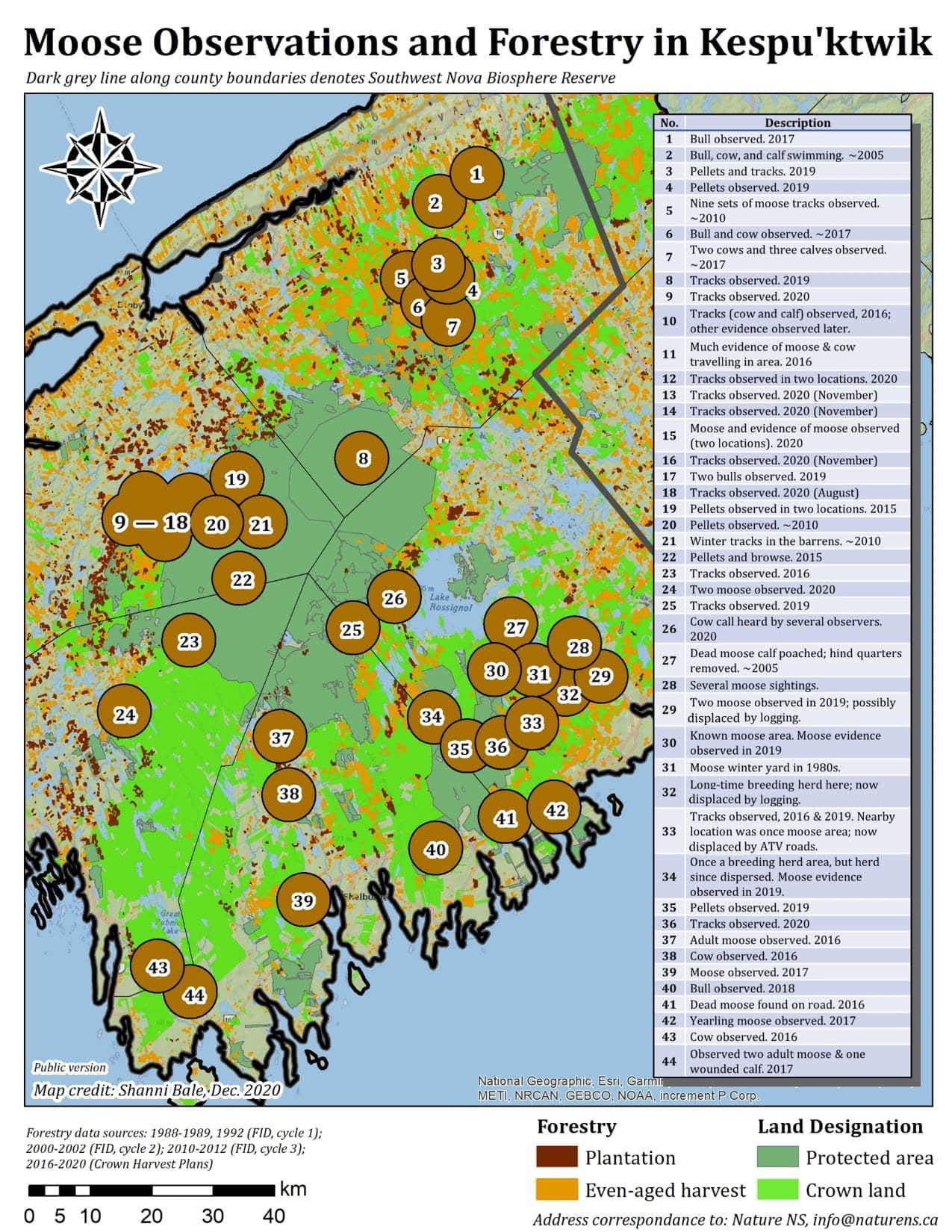
KJIPUKTUK (Halifax) – Mainland moose may well benefit from clearcutting, says Westfor.
“In fact, many scientific studies have shown that responsible forest management can help enhance moose habitat by providing requirements such as browse (food), shelter patches, wetland buffers and corridors,” writes Marcus Zwicker, WestFor’s general manager in a news release issued late last week.
The company is set to clearcut some 460 ha of known mainland moose habitat between two wilderness areas .
The news release was issued after the company served a temporary injunction against the forest defenders blocking access to woods flagged for clearcutting in Digby County.
Whereas Zwicker’s assertion is broad and sweeping, the issues as articulated by critics of Westfor’s forestry practices in the region are notably more pointed.
For instance, when the Nova Scotia Advocate spoke with Mike Lancaster, an expert in natural resource management, he focused on very different concerns.
“My main interest comes from a landscape connectivity and landscape ecology perspective,” he told us.
“We are dealing with a connective region of public land between Silver Lake, or the Silver River Wilderness Area, and the Tobeatic Wilderness Area, Lancaster said.
“One of the main concerns for conservation in Nova Scotia is habitat connectivity and the threat presented by the fragmentation that’s occurring. There’s been some infiltration of roads coming from both the north and the south of the area, and it seems that the plan is for these roads to eventually connect.”
“Right now it’s one of the few areas in Nova Scotia that remains non-fragmented, and regardless of the presence of moose, it’s important to maintain these unfragmented corridors in Nova Scotia, to provide a habitat for the species at risk, moose being the example in this case. Clearcutting exacerbates everything even more,” Lancaster explained.

Meanwhile, wildlife biologist Bob Bancroft last week sent a letter to the province on behalf of Nature Nova Scotia, a federation of the natural history clubs in Nova Scotia. It provides evidence of the prominence of the last remaining mainland moose in the area in question.
“After conferring with a number of knowledgeable local citizens, including First Nations peoples, we have created the attached map of known mainland moose areas in western Nova Scotia. This is an endangered species.
Nature Nova Scotia respectfully requests that Crown (public) land areas within the 60² km zones delineated on this map be excluded immediately from any even-aged harvesting that is currently underway, or being planned.
Current provisions to protect mainland moose and their habitats are simply inadequate.
We also respectfully request and await a response from your Department within the next two weeks. Time is important, for the moose, the habitats and the concerned citizens who have been blockading the logging roads for many weeks.“
Note that the locations on the map have been purposely skewed so that it is of no use to poachers.
Bancroft explained his concerns regarding the mainland moose in a November 3rd op-ed for the Chronicle Herald:
- “When the mainland moose population was declared endangered in 2003, the government recovery plan was to identify and set aside “core habitats” for moose. Not one core habitat has ever been designated.
- Moose need mixed hardwood-softwood stands with at least 25 per cent hardwoods, spread over landscapes for food.
- Herbicides are eliminating hardwoods, an important food source for many wildlife species, including deer and moose.
- Some will tell you that they’ve seen a moose in a clearcut. The sprouts/suckers growing from stumps in clearcuts offer little nutrition for moose, compared to young hardwoods growing from seed. Moose tend to avoid clearcuts until 15-25 years of regeneration exists on the site.
- Moose are highly dependent on mature, 100-plus-year-old forests for shelter from summer heat and cold winter winds, with a scattering of younger forest patches for food. Lands and Forestry authorizes the reverse: a few forest “clumps” set in a sea of clearcuts.
- Lands and Forestry mandates a 20-metre-wide forest buffer between clearcuts and waterways. Scientific studies have found that the buffers have to be at least 60 metres wide before moose will use them.
- When road densities reach 0.6 km per square kilometre, moose avoid such areas, even if it has good habitat. New forest roads can ruin good habitat and there’s precious little of that left now for mainland moose anywhere.
Current regulations are useless to this critically endangered species. None of these basic moose needs are reflected in Lands and Forestry’s “Endangered Mainland Moose Special Management Practices,” Bancroft wrote.
No wonder the forest defenders are standing firm.
“A number of us are willing to do civil disobedience, to sit down and not leave and be arrested in protest against this,” Nina Newington told CTV in a telephone interview Friday from one of the sites.
See also: PSA: We need you to call and email now to defend the mainland moose blockades
See also: NDP calls for province-wide moratorium on clearcutting
With a special thanks to our generous donors who make publication of the Nova Scotia Advocate possible.
Subscribe to the Nova Scotia Advocate weekly digest and never miss an article again. It’s free!




Moose tend to avoid clearcuts until 15-25 years of regeneration exists on the site? Not true. A quick Google search returns a different answer. https://www.researchgate.net/publication/277729437_Moose_Alces_alces_Winter_Browse_Use_in_Central_Labrador
Biologically, there is little difference between a root sucker and a tree growing from seed.
Where are you getting your info?
Please read the article, Table 1. It entirely supports the statement “Moose tend to avoid clearcuts until 15-25 years of regeneration exists on the site”